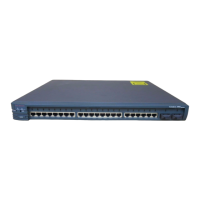Chapter 5
Layer 3 Interface Configuration
See the following sections for configuration information about these topics:
■ 5-1: Layer 3 Switching: Describes the process involved with Layer 3 switching and
the switching elements needed to perform Layer 3 switching
■ 5-2: Layer 3 Ethernet Interfaces: Explains the steps needed to configure Ethernet
interfaces for Layer 3 processing
■ 5-3: Layer 3 EtherChannels: Covers the method for configuring multiple interfaces
into a single logical channel that can be configured for Layer 3 processing
■ 5-4: WAN Interfaces: Describes how to configure Layer 3 WAN interfaces installed
in Catalyst 6500 switches
■ 5-5: Layer 3 Virtual Interfaces: Explains how to configure a logical VLAN or BVI
to perform Layer 3 processing for members of a VLAN or bridge group
■ 5-6: Routing Tables: Explains the basic process for populating and viewing the Layer
3 routing tables
5-1: Layer 3 Switching
■ Layer 3 switching is the movement of data between devices using tables or pathways
containing Layer 3 network addressing.
■ To perform Layer 3 switching, the device must have a Layer 3 switching processor
that can be a separate module or card.
■ A Layer 3 switching processor uses Layer 3 IOS to configure the Layer 3 switching
components.
■ To allow Layer 3 switching, the switch must have the routing function enabled for a
given protocol.
